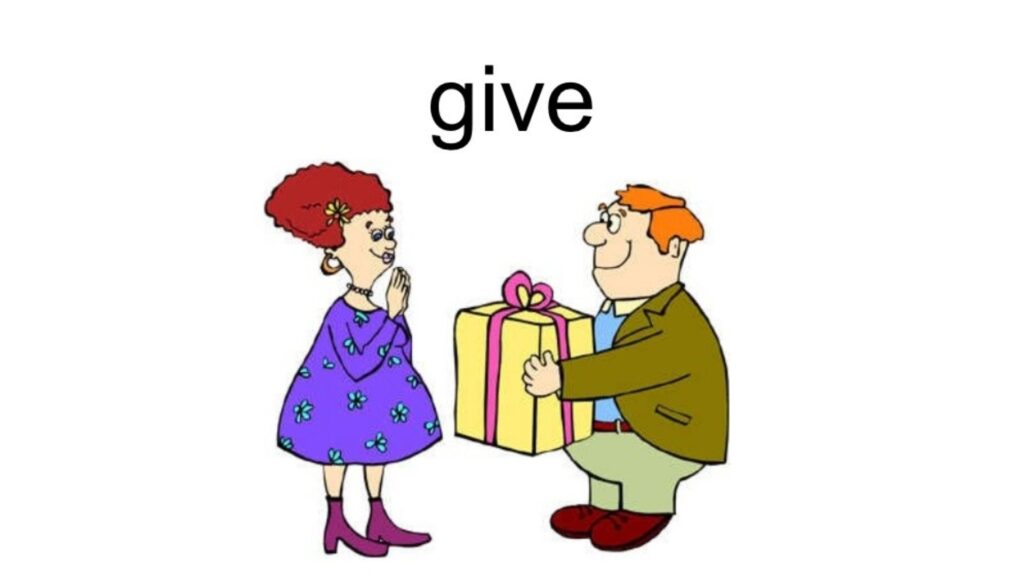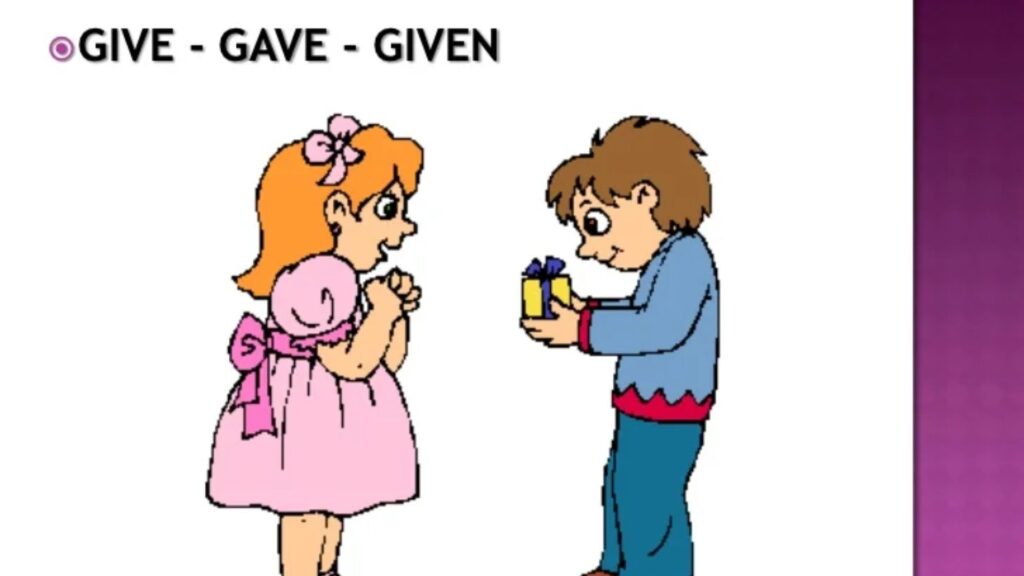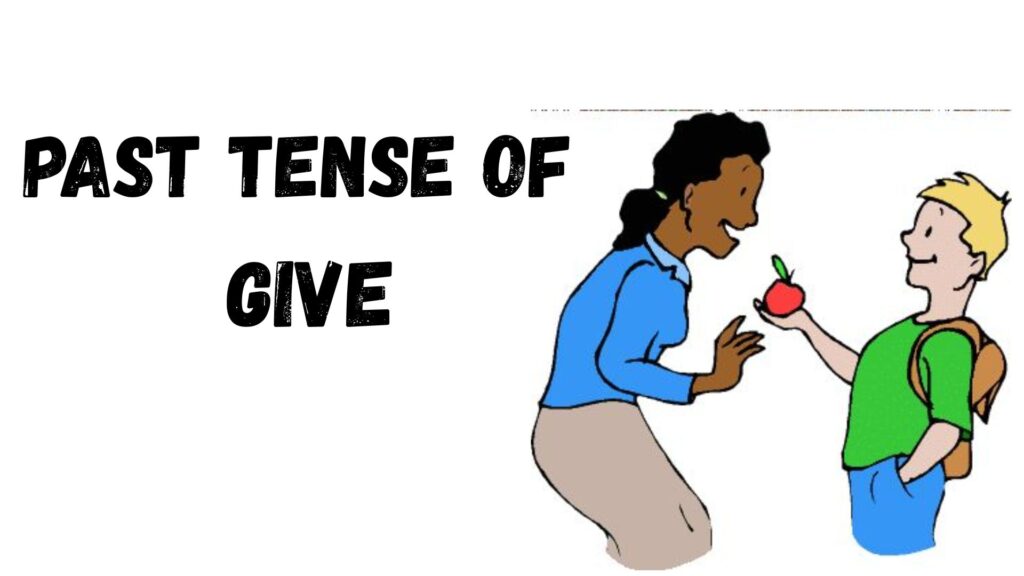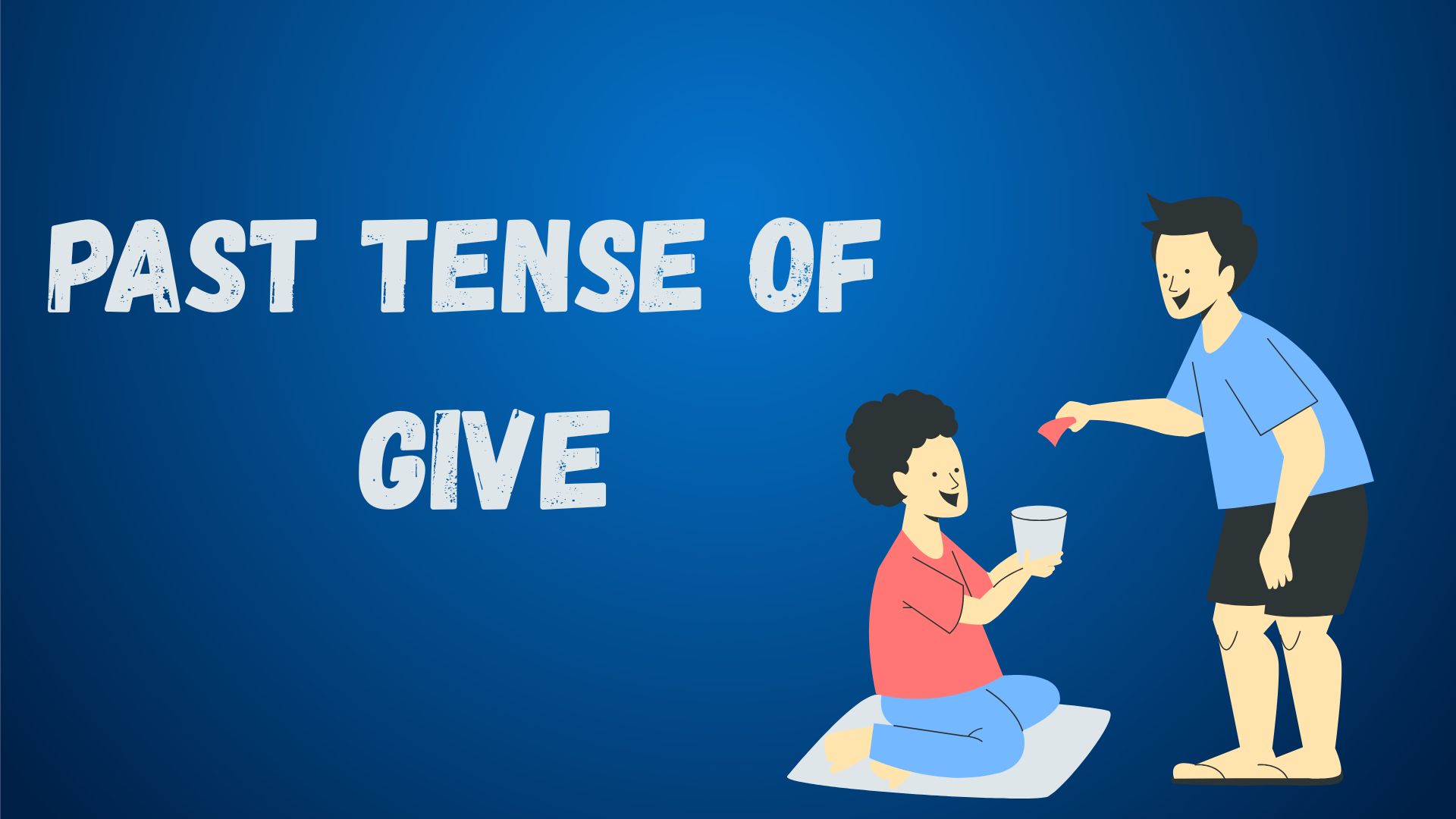If you’ve ever paused mid-sentence wondering, “Wait, is it gave or given?” you’re not alone. The verb give might seem simple, but its past tense forms often trip people up. Whether you’re writing an email, explaining a process, or storytelling, using the correct verb form makes all the difference in sounding fluent and clear.
Let’s break down give, gave, and given with examples, rules, and real-world usage that’ll stick.
Understanding the Verb “Give”

At its core, give means to hand something over to someone else. It could be tangible like a gift or abstract like advice, time, or trust.
In grammar, give is an irregular verb, meaning its past forms don’t follow the typical -ed pattern. Instead of “gived,” the correct forms are:
- Present tense: give
- Simple past tense: gave
- Past participle: given
Let’s look at each form and when to use them.
What’s the Simple Past Tense of Give?
The simple past tense of give is “gave.”
Use it when you’re describing something that happened in the past without needing any helping verbs like have or has.
✅ Examples:
- I gave her the keys yesterday.
- They gave me a second chance.
- We gave our feedback after the presentation.
📧 Email Scenario:
Subject: Update on the Budget Files
Hi Rachel,
I gave the updated financial reports to the accounting team this morning. Let me know if you’d like me to walk you through any of the revisions.
Best,
Jamal
In this example, gave is used because the action (handing over the reports) is complete and happened in the past.
What’s the Past Participle of Give?
The past participle of give is “given.”
You’ll only use given with a helping (auxiliary) verb, usually have, has, or had. This shows the action was completed in relation to another time or event often used in perfect tenses.
✅ Examples:
- I’ve given all I can to this project.
- She had given me the wrong address.
- We’ve given our notice of resignation.
📧 Scenario: Follow-up Email
Subject: Client Access Credentials
Hi Kevin,
I’ve given the development team access to the FTP server, so they should be able to deploy by noon.
Let me know if any issues pop up.
Cheers,
Priya
Notice that “I’ve given” shows the action is complete and relevant to the present situation.
Give vs. Gave vs. Given: Which One to Use?

Let’s clear up the confusion with a simple cheat sheet:
| Tense | Verb Form | Example |
|---|---|---|
| Present | give | I give my dog a treat every morning. |
| Simple Past | gave | I gave her the password last week. |
| Past Participle | given | I’ve given them everything they asked for. |
Common Mistakes with “Given” and “Gave”
It’s easy to mix up these forms, especially in speech. Here’s a quick guide to avoid common grammar slip-ups:
❌ Incorrect:
- She has gave me the book.
- They had give us instructions.
- I have give my notice already.
✅ Correct:
- She has given me the book.
- They had given us instructions.
- I have given my notice already.
Always pair given with an auxiliary verb like have, has, or had. Never use gave after these verbs.
“To Give” in Different Tenses and Voices
Here’s how give appears across tenses:
🕒 Present Tense:
- I give my best in every class.
- You give great advice.
🕑 Simple Past Tense:
- She gave him a deadline.
- They gave us no time to prepare.
🕓 Present Perfect:
- We have given everything we had.
🕘 Past Perfect:
- He had given his word and stood by it.
🕠 Passive Voice:
Sometimes, you’ll see it used passively. Here’s how that works:
- Active: Lisa gave the team a pep talk.
- Passive: A pep talk was given to the team by Lisa.
But stick to active voice when possible it’s clearer and more human-sounding.
Idioms and Phrasal Uses of “Give”

The verb give appears in many idioms and everyday expressions. Here are a few:
- Give it a shot – Try something
- Give up – Surrender
- Give in – Yield or concede
- Give someone a break – Be lenient or offer relief
- Give someone the cold shoulder – Ignore them
🎯 Example:
After hours of arguing, Jordan gave in and agreed to the compromise.
These phrases don’t always follow the same conjugation logic as the base verb, so treat them as fixed expressions.
“Have Given” vs. “Gave”: Subtle Differences
Here’s where native-level nuance kicks in.
- “Gave” is strictly past.
- “Have given” connects past to present.
✅ Side-by-Side:
- I gave her the book. (Action is done.)
- I have given her the book. (Action is done and possibly still relevant.)
If you’re talking about a one-time action, stick with gave. If you want to highlight its present impact or relevance, go with have given.
Real-Life Dialogue Snippets
💬 Conversation:
Emily: “Did you send the client the updated deck?”
Carlos: “Yep, I gave it to them yesterday.”
Emily: “Cool. I’ve already given the interns access to the project files too.”
These subtle shifts reflect how naturally native speakers switch between forms based on context.
Grammar Tip: Subject-Verb Agreement
Since give is irregular, remember:
- He/She/It gives (present)
- He/She/It gave (past)
- He/She/It has given (past participle with auxiliary)
Don’t write: He give me advice last week.
Correct it: He gave me advice last week.
Conclusion: Keep the Tense Straight
Understanding the difference between give, gave, and given unlocks clearer, more fluent writing and speaking. These aren’t just rules they’re tools that shape how your message lands.
To recap:
- Use give in the present.
- Use gave when talking about something that happened and ended in the past.
- Use given with have, has, or had to connect the past to the present or another past event.
If in doubt, try swapping in another irregular verb like eat/ate/eaten to test if it sounds right. “I’ve gave” will feel just as wrong as “I’ve ate.”
Now go ahead give yourself a pat on the back. You’ve mastered one of English’s most deceptively tricky verbs.

